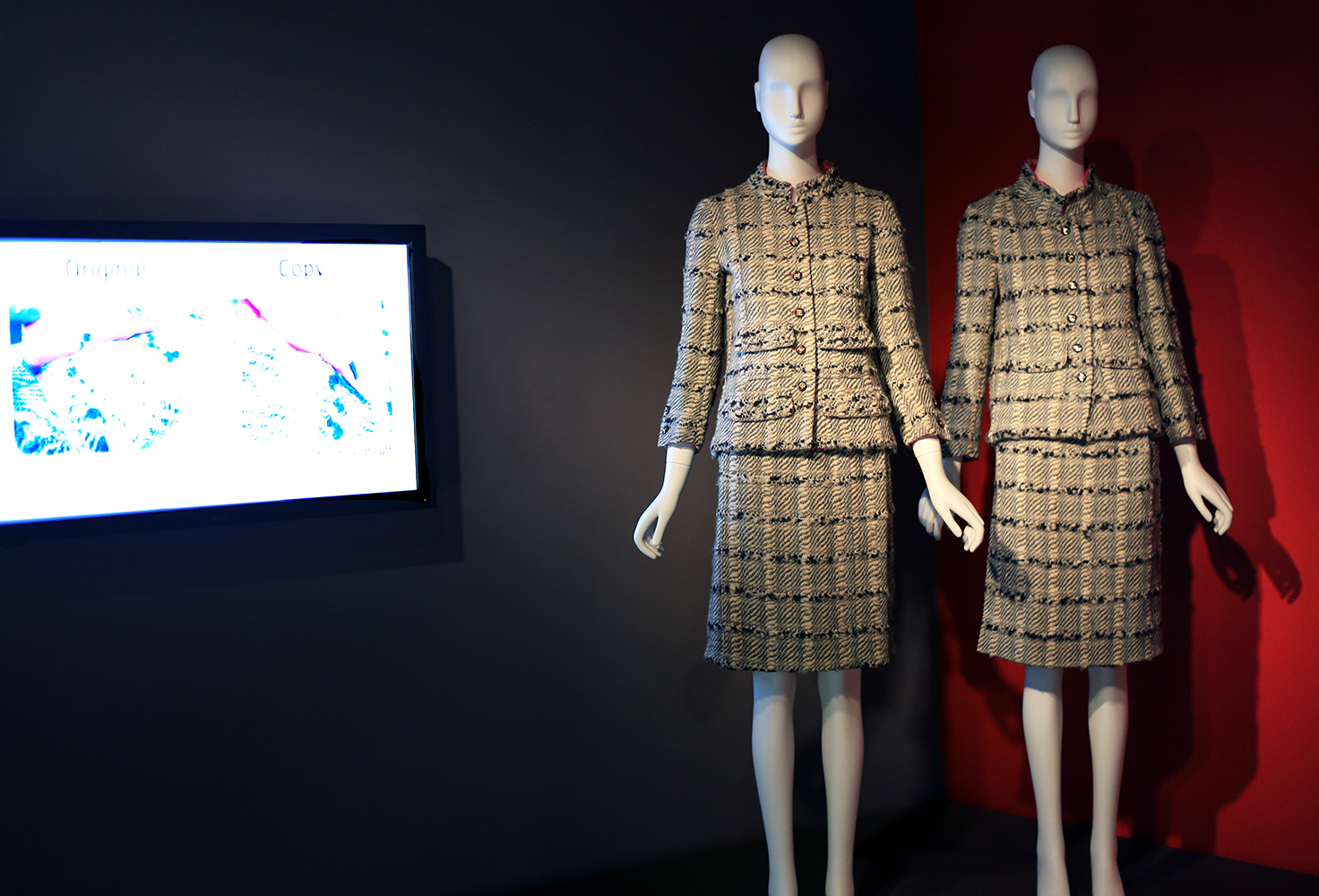Paul Poiret evening dress, 1927 (L); Paul Poiret evening coat (authorized reproduction), 1917 (R)
Fabricated fakes and counterfeit clothing have purposefully plagued fashion over time; the more prominent a product's profile, the more prevalent the phonies. In its current exhibit, Faking It: Originals, Copies and Counterfeits, New York's Museum at the Fashion Institute of Technology investigates the complex conundrum of counterfeit culture and explores the means by which designers and brands address 'authenticity.' As the museum has recently begun allowing photography in select galleries, keep reading to see some stills...
Coco Chanel day suit, 1966 (L) and licensed copy of a Chanel day suit, 1967 (R) with a video on how to spot the fake
While Chanel is one of the most imitated brands, Coco herself was a fan of costume jewelry and regarded knock-offs as free publicity. Over the years, other designers have not shared the same sentiment; what constitutes a sham--and its significance--stays subjective. Under the premise of preserving original design, designers have gone through great lengths to secure the spirit of authenticity. At the turn of the century, couturier Madeline Vionnet attempted to prevent unauthorized replicas by adding her thumbprint to clothing labels. Christian Dior marked select sketches with invisible ink (only visible under black light) to prevent forgeries. Today, brands enter into licencing agreements and diffusion collaborations (e.g. Missoni x Target or H&M x Versace) to expand access and limit the appeal for reproductions.
Christian Dior coat, 1951 (1); Carrie Munn cocktail dress, 1955 (2); Jean Desses ensemble by Raymodes Negligees(3); Charles James dress (4)
In addition to straight-from-the-runway reproductions and unconsented copies, parodies and adapted artwork also feed into the culture of conceptual counterfeits. YSL's version of the Mondrian dress has been repeatedly imitated. Roy Lichtenstein's Girl with the Ribbon Hair surfaced on a Moschino Cheap and Chic suit. Jeremy Scott and others have been known to re-interpret through 'brand jacking' (with or without permission). In a market saturated with selection, the threshold of tolorence for bogus or borrowed (but beautiful!) becomes blurred.
Yohji Yamamoto dress w/ LV-like pattern (L); Brian Lichtenberg Studio Hermes parody (M); Moschino parody of McDonald's(R) [photo: source]
Installation view
Posters promoting preservation of design
Vivienne Tam Mao suit, 1995 (1); Roy Lichtenstein's Girl w/ Ribbon Hair on Moschino Cheap & Chic suit, 1991 (2); Perry Ellis (Marc Jacobs) The Oscar Skirt, 1991 (3); Mike Bidlo man's suit, 1982 (4)
Unauthorized copy of the Mondrian dress (L), YSL's Mondrian dress (M), Unauthorized copy of the Mondrian dress by Paul Jacobs (R)

%2BStylecurated%2BFakes1.jpg)
%2BStylecurated%2BFakes2.jpg)
%2BStylecurated%2BFakes4.jpg)

%2BStylecurated%2BFakes5.jpg)
%2BStylecurated%2BFakes3.jpg)
%2BStylecurated%2BFakes6.jpg)
%2BStylecurated%2BFakes7.jpg)
No comments:
Post a Comment